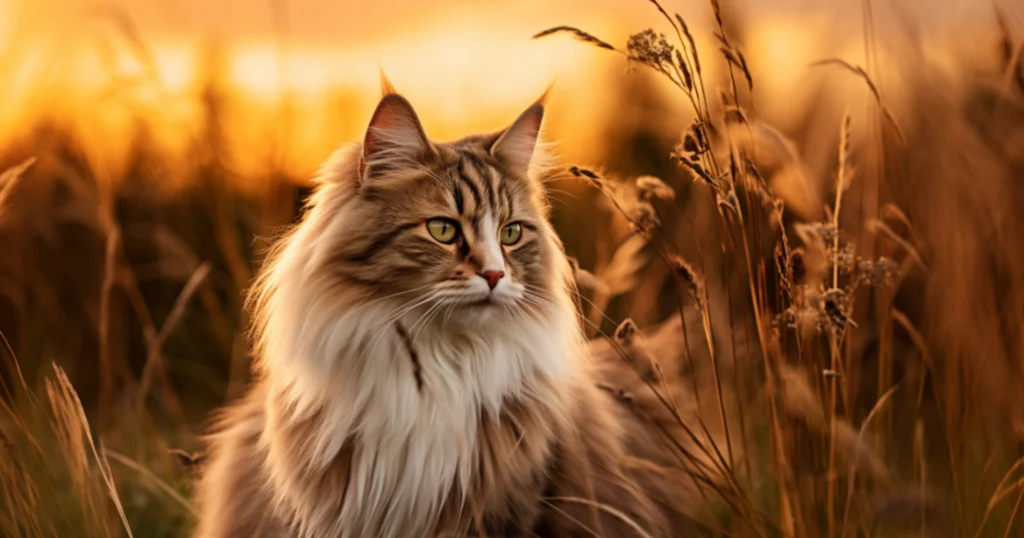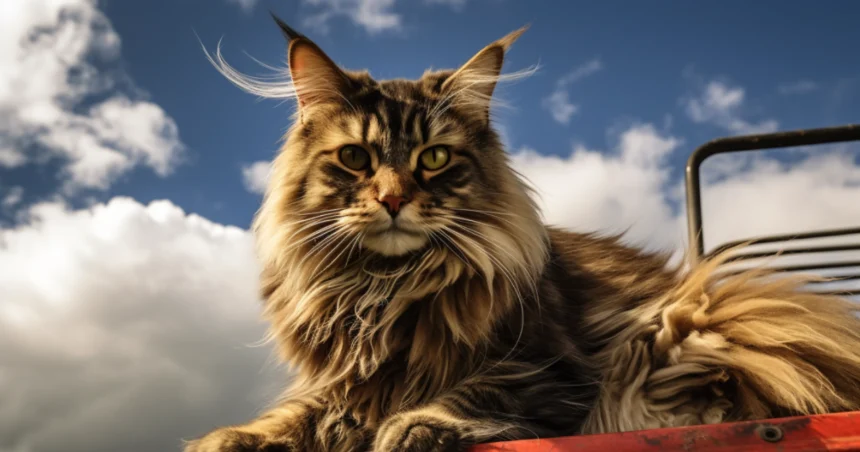Ever heard that peculiar sound, almost like tiny trumpets, coming from your cat and thought, “What the heck is that?” Welcome to the captivating world of cat trilling! This distinctive chittering noise is more than just an adorable quirk – it’s a cat’s melodious way of having a heart-to-heart with us humans. This social sonata is an amazing way our fluffy pals bond with us, creating a unique harmony that can leave us baffled and charmed at the same time.
In this article, we’re taking a deep dive into the enchanting universe of cat trilling. We’ll uncover what it is, where it comes from, and how it differs from other cat sounds. We’ll get a sneak peek into how our feline friends master this skill, understand the feelings it can represent, and finally, decipher its role in their language. So, fasten your seatbelt, folks! We’re going on a journey into the world of feline chit-chat where each trill is more than just a sound—it’s a real gabfest.
Understanding Cat Trilling

Nature of Cat Trilling
Picture a dance-off where your cat’s the star, showing off their special move – the ‘trill’. Cat trilling is like their version of a melodious tweet, belted out in quick, rhythmic bursts. It’s like a sweet sonnet dipped in their own special brand of mystery, an essential part of their social toolkit.
Trilling is like the purring paint on the canvas of cat conversation. Each trill adds a splash of color to their social interactions, strengthening bonds and building bridges with their human and cat buddies.
Learning to Trill
Akin to the blooming of a delicate bud into a flower, the journey of a kitten learning to trill is a testament to nature’s intricate choreography. This unique feline linguistics lesson takes place during the early developmental stages of a kitten’s life, typically between 2 and 7 weeks of age. During this ‘sensitive period,’ kittens, much like little sponges, absorb and mimic social behaviors from their adult counterparts, trilling being one of them.
However, it’s crucial to note that kittens who lack adult cat companionship during this formative period might never master the art of trilling. As with language in humans, social exposure plays an integral role in learning this unique form of feline expression, underlining the quintessential significance of social dynamics in shaping feline behavior.
Differentiating Trilling From Other Cat Sounds

Trilling vs. Purring
Purring is often a low, continuous, rhythmic sound associated with contentment and relaxation. On the other hand, trilling is a high-pitched, melodic noise, more rapid and punctuated. Unlike the ubiquitous purring, trilling is often utilized for social communication and interaction.
Trilling vs. Meowing
Meowing, the classic cat utterance, varies greatly in pitch, volume, and length, often signaling a request or demand from your feline friend. Conversely, trilling, with its musical chirps, is more about expressing enthusiasm or greeting, maintaining a consistent tonality and rhythm distinct from the more dynamic meow.
Trilling vs. Yowling
Yowling, typically a drawn-out, somewhat distressing sound, differs vastly from trilling in both tone and intent. Yowling is often linked to discomfort, distress, or territorial disputes, whereas trilling is a cheerful, short-lived chirp intended for positive social engagement.
Trilling vs. Hissing
Hissing is the polar opposite of trilling on the feline vocalization spectrum. Hissing, a high-pitched, sustained sound, is a cat’s way of expressing fear, anger, or discomfort, typically occurring in stressful or threatening situations. It’s a warning signal, a stark contrast to the inviting, sociable nature of trilling. Trilling, in its melodic brevity, is a tool for establishing social connections and interactions, most likely to occur when a cat is content, relaxed, and willing to communicate. It’s the sweet serenade to the hissing’s dramatic symphony.
Mechanics of Trilling

The mechanics of trilling lie in the unique vocalization method employed by cats to create this distinct sound. Trilling is a sound produced with a closed or barely open mouth, differing significantly from the mechanics behind other feline sounds like meowing or yowling which require the mouth to be open.
When a cat trills, it forces air through its vocal cords while keeping its mouth nearly shut. This method results in the air being expelled in short bursts, producing a rapid succession of sound waves that give the trill its signature melody. This melodious chirp is unique to trilling, distinct from the prolonged vibrations in purring or the open-mouth vocalizations of meowing and yowling.
It’s also important to note that while trilling, the tongue position can affect the trill’s pitch and volume. The precise control cats have over their vocal apparatus allows them to produce a wide array of sounds, with trilling being one of the most distinctive and expressive. This complex interplay between the cat’s breath control, tongue placement, and vocal cord tension showcases the sophistication in feline communication and further emphasizes the uniqueness of trilling in the pantheon of cat sounds.
Emotional Connotations of Trilling

Positive Emotion
Trilling is generally associated with positive emotions and is a clear sign that your cat is content or excited. Unlike other vocalizations that may indicate distress or discomfort, trilling is an expression of joy, curiosity, or anticipation. You might hear a cat trill during positive interactions such as playful moments, or when it is exploring new environments. It is often a way for cats to express excitement or eagerness, for instance, while awaiting a meal, or when their favorite human comes home. Therefore, hearing your cat trill can be an indication that they are comfortable and satisfied in their surroundings.
Sign of Affection
Beyond being an expression of positive emotion, trilling can be a way for cats to show affection towards their owners or other cats. This endearing sound can serve as a special greeting, a way of saying “hello” or “pay attention to me.” Some cats might trill when they jump onto the bed to join their owners, or when they are seeking some cuddle time. In multi-cat households, trilling can also be a friendly interaction between cats. Notably, mother cats often trill at their kittens as a sign of affection or to call for their attention. Recognizing trilling as a sign of affection can help deepen the bond between cats and their owners, enhancing the overall pet-owner relationship.
Trilling as Communication

Getting Attention
Trilling can be a cat’s vocal tool for getting attention from their human companions. Cats often pair this unique sound with other behaviors to express their needs or desires. For instance, a cat might trill while weaving between your legs or walking circles around you, indicating it seeks your attention or possibly even some playtime. Other cats may trill before headbutting you, a behavior known as “bunting,” which is another sign of affection and a request for your attention. Understanding these behaviors can enable a more effective and empathetic response to your cat’s needs, enhancing the communication between you and your feline friend.
A Welcoming Vibe
Trilling also serves as a warm and welcoming signal in a cat’s language. It’s often used as a friendly greeting when a cat encounters its human owners, other household members, or even other cats. In multi-cat households, you might notice one cat trilling upon seeing another, signaling a friendly intention. Similarly, cats may trill when their favorite human returns home, signaling their joy and welcome. It’s their way of saying, “I’m glad to see you.” Recognizing and responding positively to such signals can strengthen the bond between you and your cat, and contribute to a harmonious and happy cohabitation environment.
Conclusion
In understanding our feline friends, the charming sound of cat trilling plays a significant role. This high-pitched, melodic noise, unique in the repertoire of cat sounds, is a natural form of social communication among cats, learned during the early stages of their life. Trilling, distinct from purring, meowing, yowling, or hissing, has its own unique acoustic signature produced through a closed mouth, making it stand out among other vocalizations.
Often, trilling is an expression of positive emotions, signaling joy, contentment, or affection. It can be a cat’s special way of sharing their affection, or a warm greeting to their human companions or fellow feline friends. More than a simple call for attention, trilling is an essential part of a cat’s communication, helping create a positive, welcoming atmosphere.
Understanding and appreciating cat trilling can deepen the bond between cats and their humans, enhancing mutual understanding and respect. So, the next time you hear your cat trill, remember, it’s a special sound that signifies their contentment, affection, and sociability.


